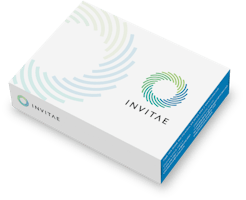
Invitae Farber Lipogranulomatosis Test
Test code: 06179 •
Test description
The Invitae Farber Lipogranulomatosis Test analyzes the ASAH1 gene, which is associated with Farber lipogranulomatosis. This test is useful for the diagnosis of patients in whom Farber lipogranulomatosis is suspected due to clinical symptoms or biochemical findings. Identification of disease-causing variants provides accurate risk assessment and carrier status of at-risk relatives.
Ordering information
Turnaround time:
10–21 calendar days (14 days on average)New York approved:
YesPreferred specimen:
3mL whole blood in a purple-top EDTA tube (K2EDTA or K3EDTA)Alternate specimens:
Saliva, buccal swab, and gDNA are also accepted.Learn more about specimen requirementsRequest a specimen collection kitClinical description and sensitivity
Clinical description:
Farber lipogranulomatosis is a lysosomal storage disease, caused by deficient or absent activity of acid ceramidase. Acid ceramidase is a lysosomal enzyme which catalyzes the lysosomal degradation of ceramide to sphingosine and fatty acid. Deficiency of acid ceramidase leads to accumulation of ceramides in various tissues, resulting in the characteristic clinical features of Farber lipogranulomatosis. Classical clinical features include the triad of subcutaneous nodules (lipogranulomas) which are often periarticular, painful and progressively deformed joints, and vocal hoarseness due to laryngeal involvement. There may be involvement of additional tissues including the lungs, central nervous system, and lymph nodes. Seven different subtypes have been described, according to age of onset, severity and clinical features.
Type 1 is the most common subtype, with an age of onset in the first year of life. Individuals present with the classical triad of features in the first few months of life. Additional features include developmental delay and lung disease. Survival is usually into early childhood. Type 2 and 3 are generally less severe and individuals have no neurological involvement. Individuals may survive into later childhood. Type 4 is the most severe, presenting in the neonatal period with severe neurological deterioration and hepatosplenomegaly. Individuals usually do not survive beyond the first year of life. Histopathology shows histiocytic infiltration of liver, spleen, lymphoid tissue, thymus and lungs. Type 5 has an onset usually between 1 and 2.5 years. A major feature is progressive neurological involvement, manifesting as quadriplegia, loss of speech, myoclonus, seizures and intellectual disability.
Individuals with Farber lipogranulomatosis will have reduced acid ceramidase levels, and abnormally high ceramide levels in cultured cells, biopsy samples or urine.
Assay information
Invitae is a College of American Pathologists (CAP)-accredited and Clinical Laboratory Improvement Amendments (CLIA)-certified clinical diagnostic laboratory performing full-gene sequencing and deletion/duplication analysis using next-generation sequencing technology (NGS).
Our sequence analysis covers clinically important regions of each gene, including coding exons and 10 to 20 base pairs of adjacent intronic sequence on either side of the coding exons in the transcript listed below, depending on the specific gene or test. In addition, the analysis covers select non-coding variants. Any variants that fall outside these regions are not analyzed. Any limitations in the analysis of these genes will be listed on the report. Contact client services with any questions.
Based on validation study results, this assay achieves >99% analytical sensitivity and specificity for single nucleotide variants, insertions and deletions <15bp in length, and exon-level deletions and duplications. Invitae's methods also detect insertions and deletions larger than 15bp but smaller than a full exon but sensitivity for these may be marginally reduced. Invitae’s deletion/duplication analysis determines copy number at a single exon resolution at virtually all targeted exons. However, in rare situations, single-exon copy number events may not be analyzed due to inherent sequence properties or isolated reduction in data quality. Certain types of variants, such as structural rearrangements (e.g. inversions, gene conversion events, translocations, etc.) or variants embedded in sequence with complex architecture (e.g. short tandem repeats or segmental duplications), may not be detected. Additionally, it may not be possible to fully resolve certain details about variants, such as mosaicism, phasing, or mapping ambiguity. Unless explicitly guaranteed, sequence changes in the promoter, non-coding exons, and other non-coding regions are not covered by this assay. Please consult the test definition on our website for details regarding regions or types of variants that are covered or excluded for this test. This report reflects the analysis of an extracted genomic DNA sample. In very rare cases, (circulating hematolymphoid neoplasm, bone marrow transplant, recent blood transfusion) the analyzed DNA may not represent the patient's constitutional genome.
You can customize this test by clicking genes to remove them.
Primary panel
Question about billing?
Find answers